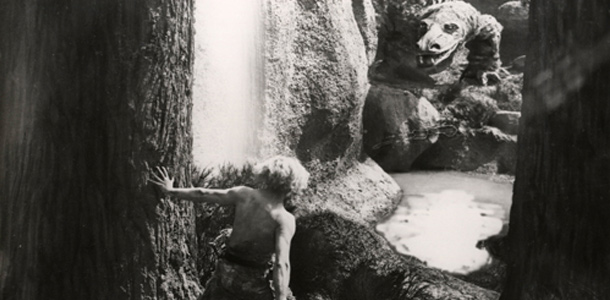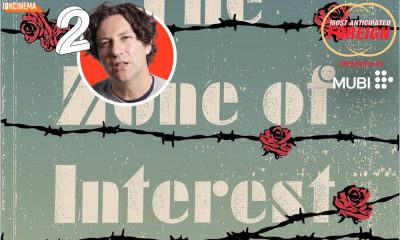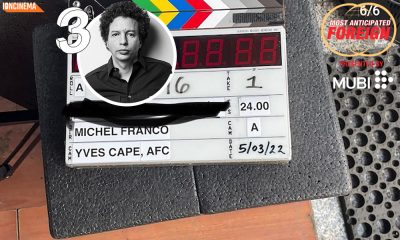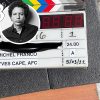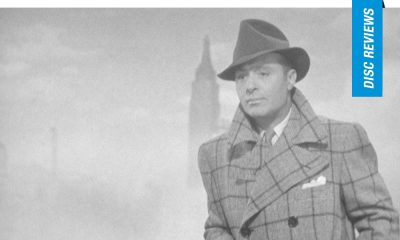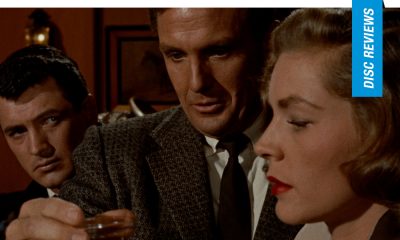Disc Reviews
Die Nibelungen | Blu-ray Review
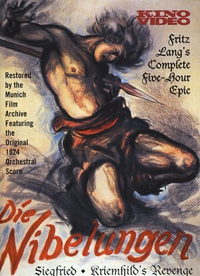 This month, one of Fritz Lang’s first epic masterpieces, Die Nibelungen gets a lush Blu-ray treatment from Kino, and it has to be one of the most exciting remasters of the year. Sandwiched in-between his seminal crime classic Dr. Mabuse: the Gambler (1922) and Metropolis (1927), Lang’s expansive rendering of the Nordic legend is a technical achievement that rivals the likes of The Lord of the Rings trilogy, and was thus split into two parts, Siegfried and Kreimheld’s Revenge (and is not based on Wagner’s opera). Fans of Lang’s oeuvre should be salivating at the chance to experience these beautiful remastered prints, and even though Lang had his fair share of subpar titles, there’s no denying his innate genius here, with what stands as one of the most impressive feats of filmmaking before and after the advent of sound.
This month, one of Fritz Lang’s first epic masterpieces, Die Nibelungen gets a lush Blu-ray treatment from Kino, and it has to be one of the most exciting remasters of the year. Sandwiched in-between his seminal crime classic Dr. Mabuse: the Gambler (1922) and Metropolis (1927), Lang’s expansive rendering of the Nordic legend is a technical achievement that rivals the likes of The Lord of the Rings trilogy, and was thus split into two parts, Siegfried and Kreimheld’s Revenge (and is not based on Wagner’s opera). Fans of Lang’s oeuvre should be salivating at the chance to experience these beautiful remastered prints, and even though Lang had his fair share of subpar titles, there’s no denying his innate genius here, with what stands as one of the most impressive feats of filmmaking before and after the advent of sound.
Siegfried (Paul Richter), is the son of King Siegmund, and he has been honing his craft under the tutelage of a blacksmith named Mime (George John). It’s become evident to Mime that he has nothing more to teach Siegfried, who has so mastered the art of sword forging, that his end product can slice feathers drifting lazily into contact with his blades. Making his way back home to the kingdom of his father, Siegfried overhears stories about Burgundy, and his interested is piqued when he learns of the Princess Kriemhild that lives there. Siegfried vows to win her hand and heads to Burgundy, but on his way, he encounters the dreaded dragon, Fanfir, whom he must slay. Thanks to a friendly bird nearby, that directs Siegfried through its song to bathe in Fanfir’s blood and thus, become immune to sword and stone, he does just that. But, Fanfir’s thrashing tale disrupts a nearby tree, and a lime leaf sticks between Siegfried’s shoulder blades, creating a small, but dangerous weak spot for the hero.
As Siegfried advances to Burgundy, his dragon slaying reputation precedes him, and King Gunter (Theodor Loos) vows to give the hand of his sister Kriemhild to Siegfried only if he helps secure the bride Gunter lusts for, the formidable Brunhild (Hanna Ralph), an imperious Valkyrie that will only marry the man that defeats her in a daunting triathlon of events. Thankfully, Siegfried has some magical toys, including an invisibility net and a helmet that will transform his shape (items taken from the treasure of the Nibelungen, which he had also taken on his way to Burgundy), and thus, he aids the much weaker Gunter by helping him win the athletic feats. But Brunhild is no fool, and she knows that a man like Gunter could never have beaten her. She resigns herself to being his slave, but “I will never be your wife,” she declares. On a happier note, a double wedding is now in order, and Princess Kriemhilde (Maragete Schoen) is head over heels in love with her Siegfried.
All seems to be well, with the exception of the glowering Brunhild, who refuses to be touched by her husband. Gunter now requests that Siegfried take his shape and, well, tame his sassy wife. This only causes Brunhild to cause a scene with Kriemhilde, from which she begins to learn how she had been tricked into her unwanted union. Making up lies about the noble Siegfried, Brunhild demands Gunter to kill him, which the weak minded Gunter does with the help from his uncle, Hagen Tronje (Hans Schlettow). A hunt is organized, and Hagen consults Kriemhild about her husband’s safety, vowing to protect him from harm but asking that she reveal where his weak spot is in an effort to make sure no strange twist of fate brings harm to him.. Siegfriend ends up murdered, and the heartbroken Kreimheld demands justice, but Gunther refuses to punish Hagen, and instead, protects him. Thus ends the tale of Siegfried.
For its second portion, Kriemhild’s Revenge, the distraught widow of Siegfried plots her revenge, and accepts a marriage offer to the brutal Attila (Rudolf Klein-Rogge), the savage leader of the monstrous looking Huns. She secures a vow from Attila and his men that they will revenge her if ever she is wronged. After giving birth to a son, Kriemhild requests that Attila invite her brother Gunther and his men to their castle, to which Attila obliges. But once in attendance, Kriemhild orders Attila to slaughter Hagen Tronje, still fiercely protected by Kreimheld’s band of brothers. Flabbergasted, Kriemhild speaks to the savage Huns, offering a reward of gold to the slayer of Tronje, while also putting her young son in harm’s way in order to incite Attila’s rage. Her quest for vengeance at last leads the two kingdoms into a point of no return, and an unparalleled battle sequence.
Disc Review:
The famed German studio UFA pulled out all the stops in Lang’s epic monument, “dedicated to the German people,” and the end result is an extraordinary masterpiece. The film was produced over two years, including a dreaded 31 week shooting schedule, and Lang was still filming the second part while the first was released and receiving rave reviews. The musical score, performed by the Munich Radio Orchestra from an original 1924 score from Gottfried Huppertz has been reproduced wonderfully, and paired with the new HD transfer, makes this disc the best way to see Lang’s epic outside of the theater. The extra features included a 68 minute documentary on the making and restoration of the film, as well as some newsreel footage of Lang on the set.
Newsreel
A mere minute and a half of footage, it’s interesting to catch a glimpse of the master at work in 1924, but there’s not much to see.
The Legacy of Die Nibelungen
The real treat is this documentary feature on the disc, from Guido Altendorf and Anke Wilkening, which goes into the making of the film and its lasting impact. The noted dedication to the German people is examined at length, and the film, made after WWI, was really Lang’s castigation of German attitudes and intentions. His frequent collaborator and wife Thea Van Harbou, who wrote the film, is quoted here as stating of the Germans, “their deaths are more noteworthy than their lives.” However, this didn’t stop the likes of Hitler and Goebbels from championing the film as one of their favorites, twisting the film’s intentions to meet their own needs (even though it’s noted that Goebbels initial 1924 review of the film was not quite so embracing). The rich history of Die Nibelungen, now nearing 90 years of age, makes this compelling documentary a must see after watching the film.
Final Thoughts:
Fritz Lang, who would flee for Paris and then the US after being approached by Goebbels to be production supervisor at UFA under Nazi control, would leave behind his then wife Thea von Harbou, who had written what are, arguably, his best films. He was notoriously difficult to work with and found himself drummed out of Hollywood in the late 50s, with many performers refusing to work with due to his “abusive” behavior. Lang, an influence of the likes of Welles, Bunuel, and Hitchcock, was indeed a master of his craft and Die Nibelungen sports the unsung reputation of his technical masterpiece (perhaps only beaten out by Metropolis). From the 60 foot dragon Fanfir, with smoking flames from it’s mouth and a torrent of blood spouting from a neck wound (not to mention oozy goop from a pierced eye), to the massively scaled battle sequences on beautifully constructed sets, (destroyed as they were used), to the strange and terrifyingly grotesque make-up of the savage Huns, and the oddly appealing shot sequences often framing its images in geometric shapes that are matched in turn by what the actors are wearing, Die Nibelungen is a cinematic masterpiece.



